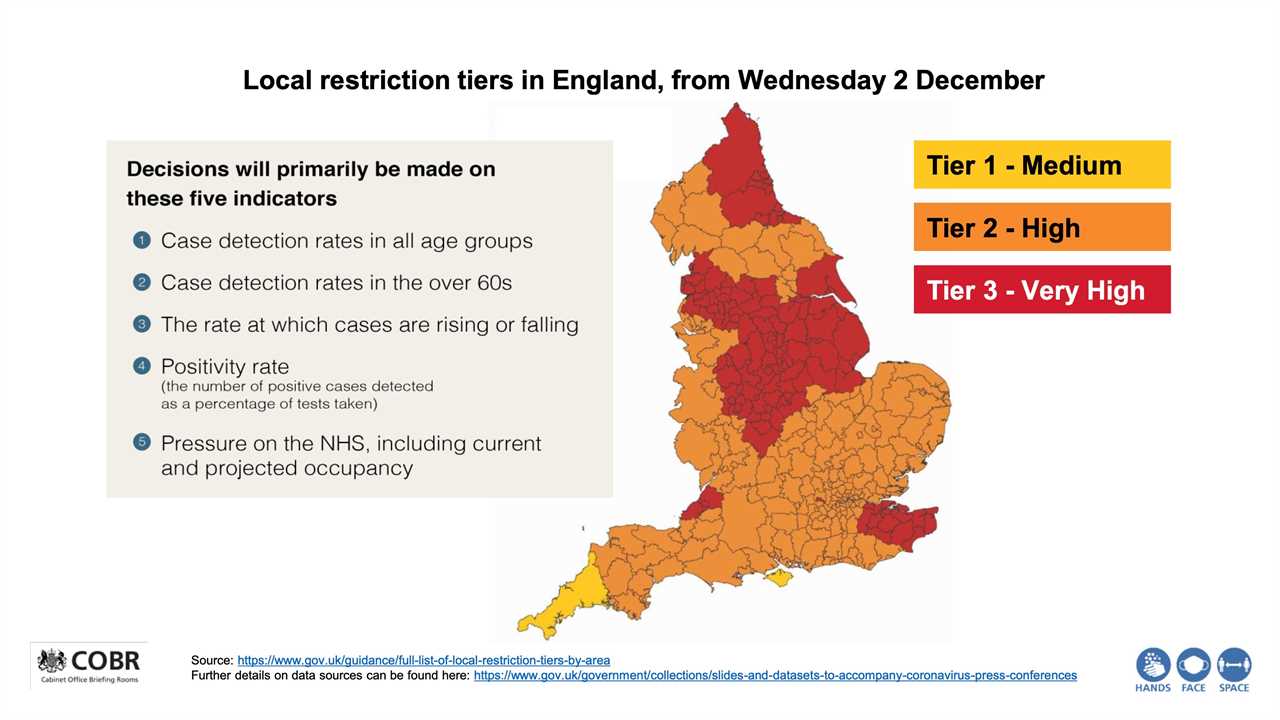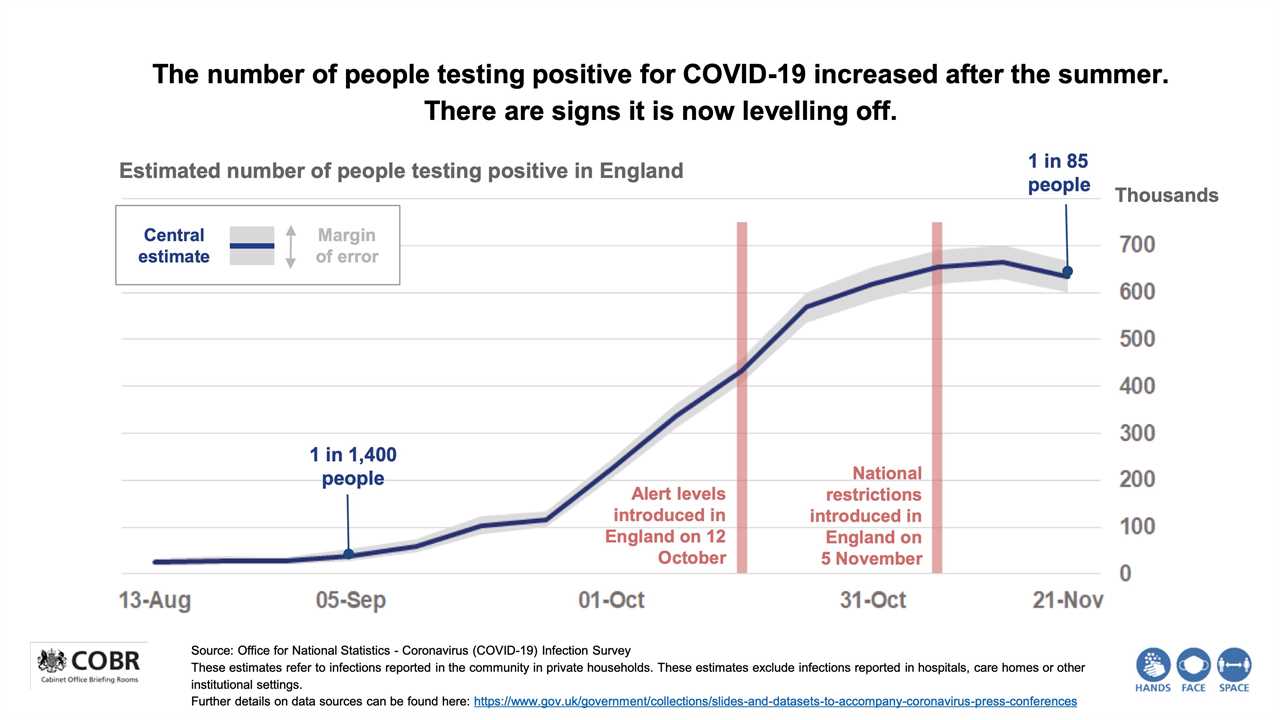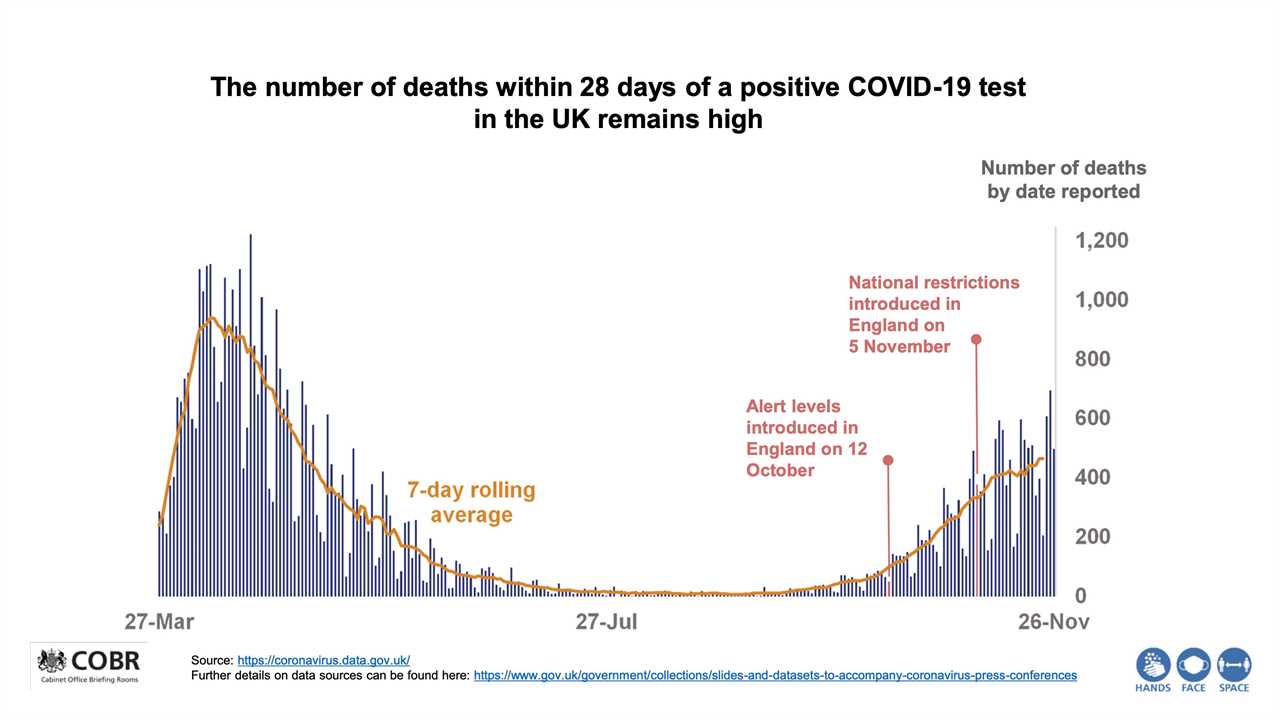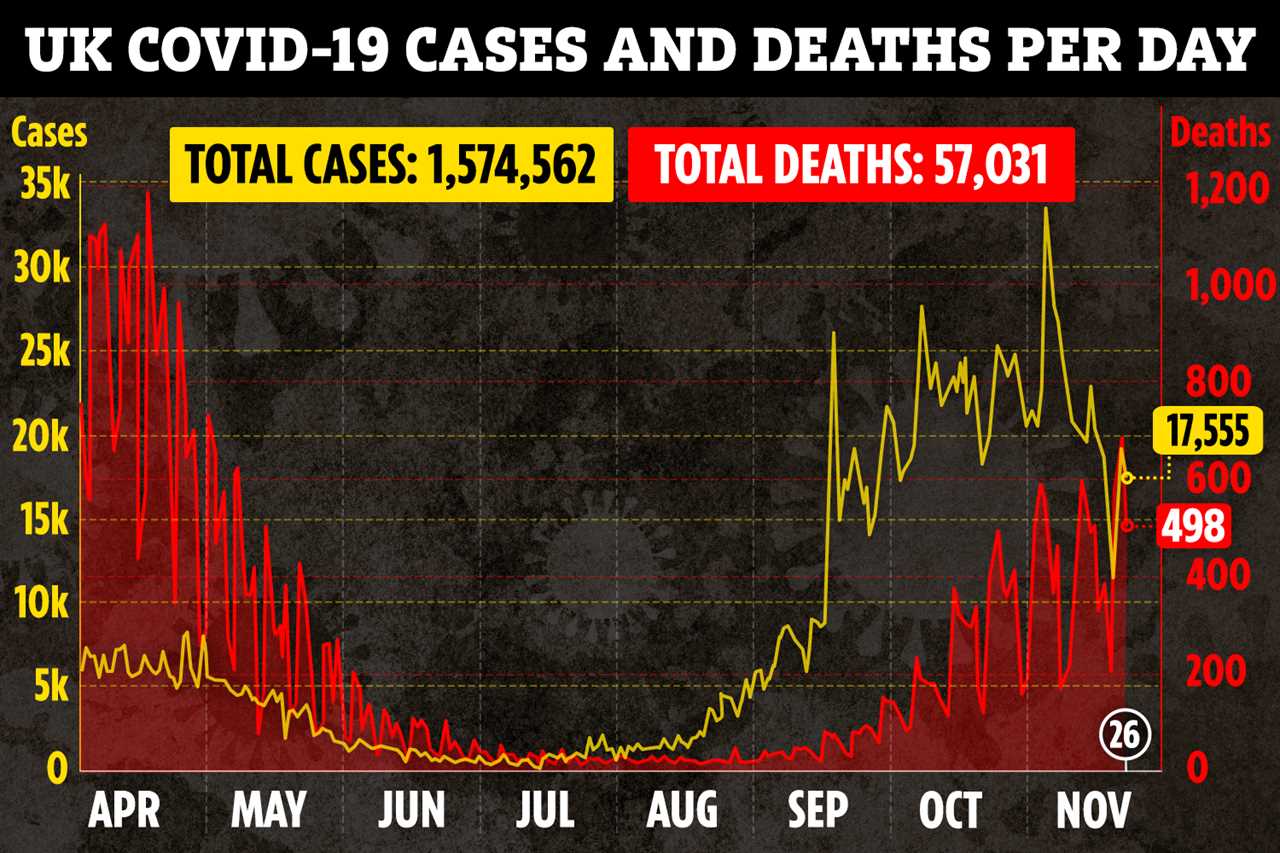ONLY three of the 150 local authorities in England have seen infection rates increase in one week.
Official data from Public Health England offers another glimmer of hope that the second wave is stalling.

The weekly PHE report gives cases in each authority in relation to population size.
Today, the data showed only three spots saw cases per 100,000 residents went up in the seven days between 16 and 22 November.
The data is an improvement on the week prior, when at least a third of local authorities were seeing rising infection rates.
In a positive boost for Northerners, nowhere above London saw cases increase in the week to November 22.
It will come as a relief to the millions of people in the North West and Midlands who have been subject to the toughest restrictions over the past few months due to stubbornly high infection rates.
But despite cases falling across the country, 99.9 per cent of the population will be put into the harshest Tier 2 and 3 restrictions from next Thursday.
Just 700,000 people – or 1.27 per cent of the population – will escape strict rules on socialising and going to the pub while in Tier 1.



Where cases are rising
Medway, in Kent, saw cases increase by the most, by almost 29 per cent, from 322.74 cases to 414.64 per 100,000 people.
It’s been revealed today that Medway, along with the rest of Kent, will be plunged into Tier 3 from December 2, when England comes out the national lockdown.
Tier 3 measures mean a ban on households mixing, except in limited circumstances such as parks.
Bars and restaurants will be limited to takeaway or delivery services and people will be advised to avoid travelling outside their area.
Redbridge, in London, and East Sussex both saw infections rise last week, but only by around five per cent.
And neither location’s case rate is among the hotspots. Redbridge’s case rate is 295.85 while East Sussex’s is 122.93.
By comparison, the authority listed by PHE as having the highest case rate was Hull, with 445.38. Medway’s infection rate comes second, followed by Stoke-on-Trent with 409.56.
Tier we go
It comes as England braces for a return to the tiered system, with officials announcing earlier today which level each postcode will fall under.
Only the Isle of Wight, Cornwall and the Isles of Scilly are in the lowest Tier 1, facing very little restrictions.
Some 32 million people in England – just over 56 per cent of the population – will be in Tier 2 – including Liverpool and London.
Tier 2 allow pubs and restaurants to remain open, but they must serve a substantial meal and different households can only mix outside.
Nearly 42 per cent (23 million people) will be in the top Tier 3 – featuring large swathes of the North and Midlands.
The Department of Health said decisions on tier levels would be based on a number of factors, including case detection rates in all age groups and, in particular, amongst the over 60s.







